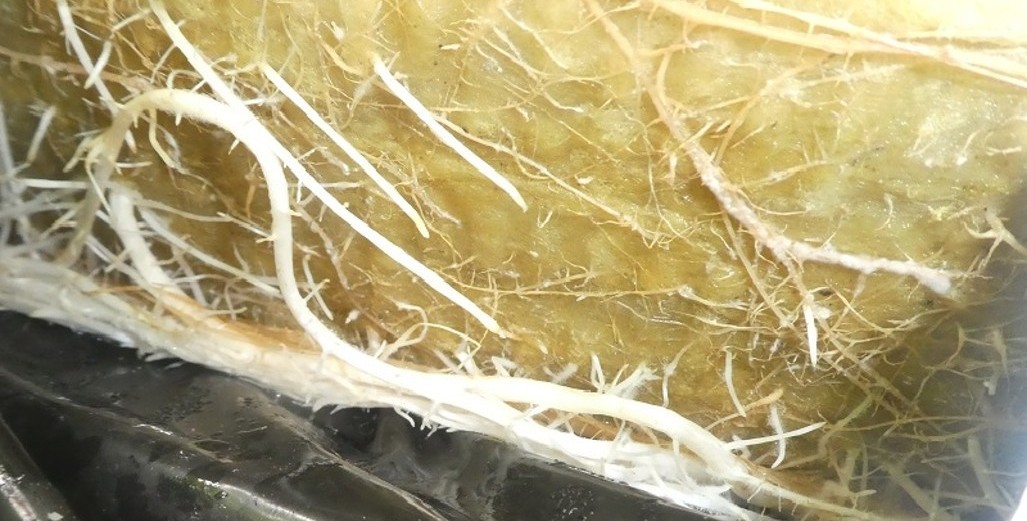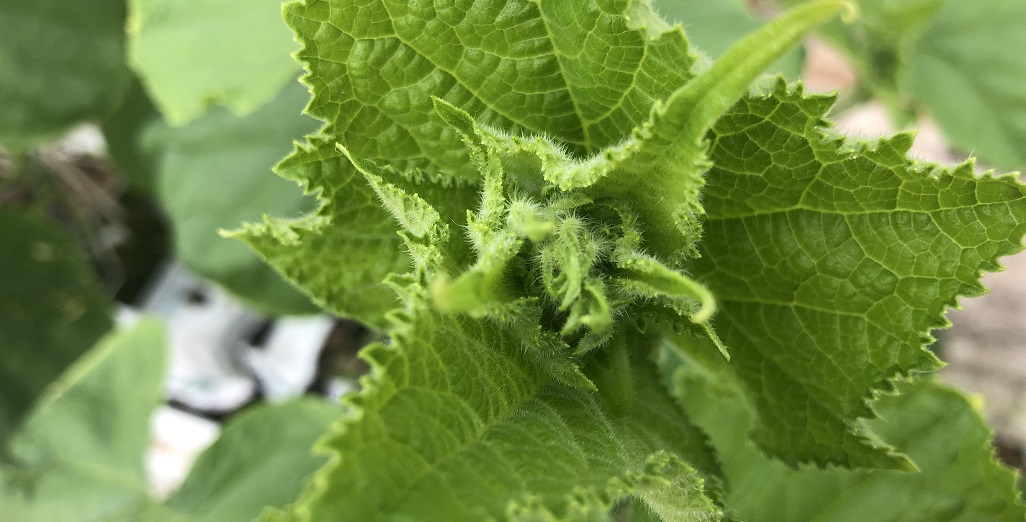Sign up here to subscribe to the Grower2grower Ezine. Every two weeks you will receive new articles, specific to the protected cropping industry, informing you of industry news and events straight to your inbox.
Sep 2019
Grafted Cucumbers Part 2

Photo that says 1000 words
Last week I visited another grower who is trialling grafted cucumber plants. The crop was recently planted and already there is a visible difference in the appearance of root volume. The grafted roots are much thicker and plentiful than the standard non-grafted. There was little difference in the plant height and vigour. However, the colour between the grafted and non-grafted was slightly different. It reaffirmed that a lot of more detail and information should be recorded.
When-ever you have a trial and it is not growing it its own area or with a separate irrigation valve there is more than likely going to be a difference over time of water content, EC and PH levels within the substrate. A perfect example was the slightly yellow appearance of the grafted plants. The root structure was already larger and plentiful in the grafted plants compared to non-grafted so it immediately made me ponder if there could be a higher PH level in the substrate of the grafted plants compared to the standard non-grafted plants, therefore partially restricting the uptake of some micro nutrient.
Two years ago, I visited a tomato grower in Hull, England. They had a trial of different plant densities of a cherry tomato cultivar grown on the property. This trial of different densities which was vast, unfortunately was conducted on the same irrigation valve. This difference for me personally made the trial totally inconclusive. The grower indicated that the highest density did not provide the fruit size he needed, however when you lifted the substrate it was very easy to determine that the weight of the slab was much lower than the slabs with the lowest densities. The slabs had literally dried out and were not watered as required to have comprehensive results. The grower had the right idea to carry out the density trials but failed to realise the importance of monitoring the slab WC.
The exact same scenario could happen with the grafted cucumber trials especially as they are irrigated for the needs of the main non-grafted plants. To measure these potential differences, you should have multiple fixed water-content probes or a HH2 water content meter and also test runoff results regularly. I would even recommend separate water analysis of the runoff from grafted v non grafted to check if there was a difference in nutrient uptake/availability.
Just carrying out production trials is not adequate; you need the full picture to accurately determine if a trial is outperforming your standard. Temperature is another variable but not many growers have the luxury of running a trial in a separate greenhouse so there will be an element of ‘grower feel’ but the more data collected will make this important decision easier to make with confidence. Recently it was pointed out to me by a scientist that growers are actually the best scientists. It is time consuming to carry out these trials but the return on investment is crucial in this increasingly competitive world.
The above photo is the rootstock from the grafted cucumber plant and below is non-grafted. This is the second crop in this substrate hence the decaying roots from the previous crop. This is an external view of roots and next time I will be cutting open some slabs to see the extent of the root growth and distribution in the substrate. However, this is a clear demonstration of the difference in initial root development.
I appreciate your comments. Please feel free to comment on the grower2grower Facebook page:
https://www.facebook.com/StefanGrower2grower/
Article Written by Stefan Vogrincic, Consultant, Grower2Grower
Article Edited by Marie Vogrincic, Editor, Grower2Grower
CLASSIFIED
Subscribe to our E-Zine
More
From This Category



High-tech spy gear to uncover the secrets of Bumble bees in Tasmania

Cherry Production in New Zealand – Mike Nichols































